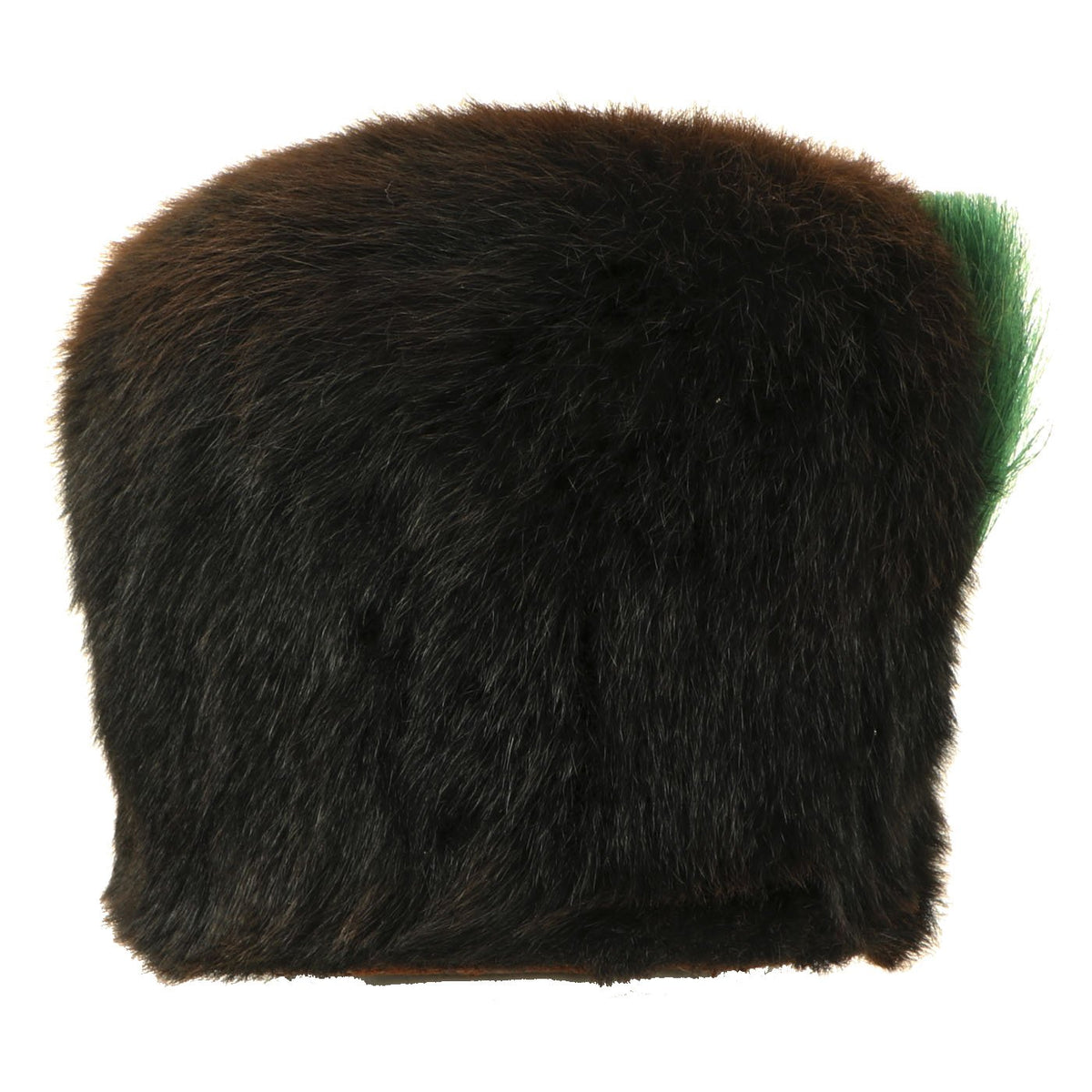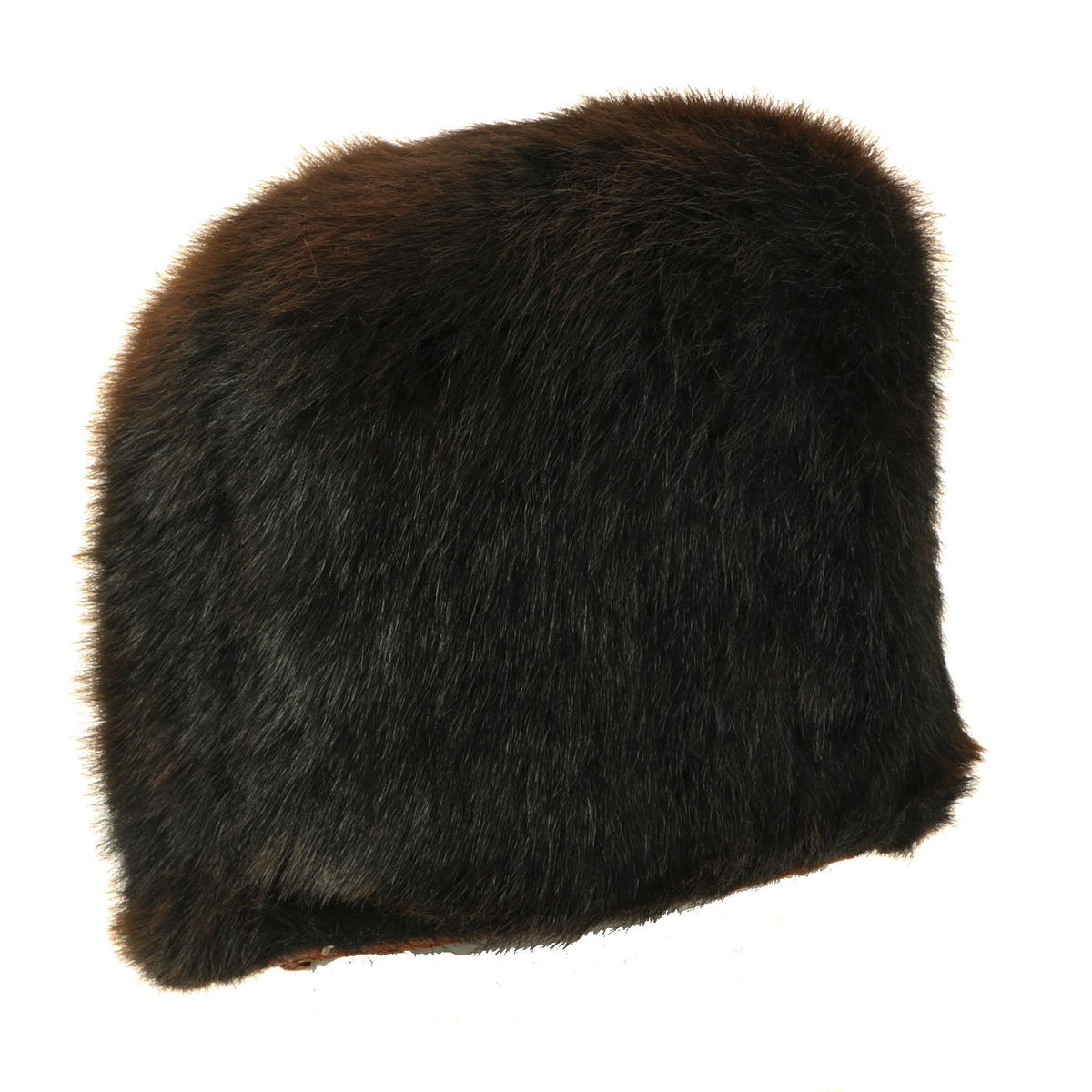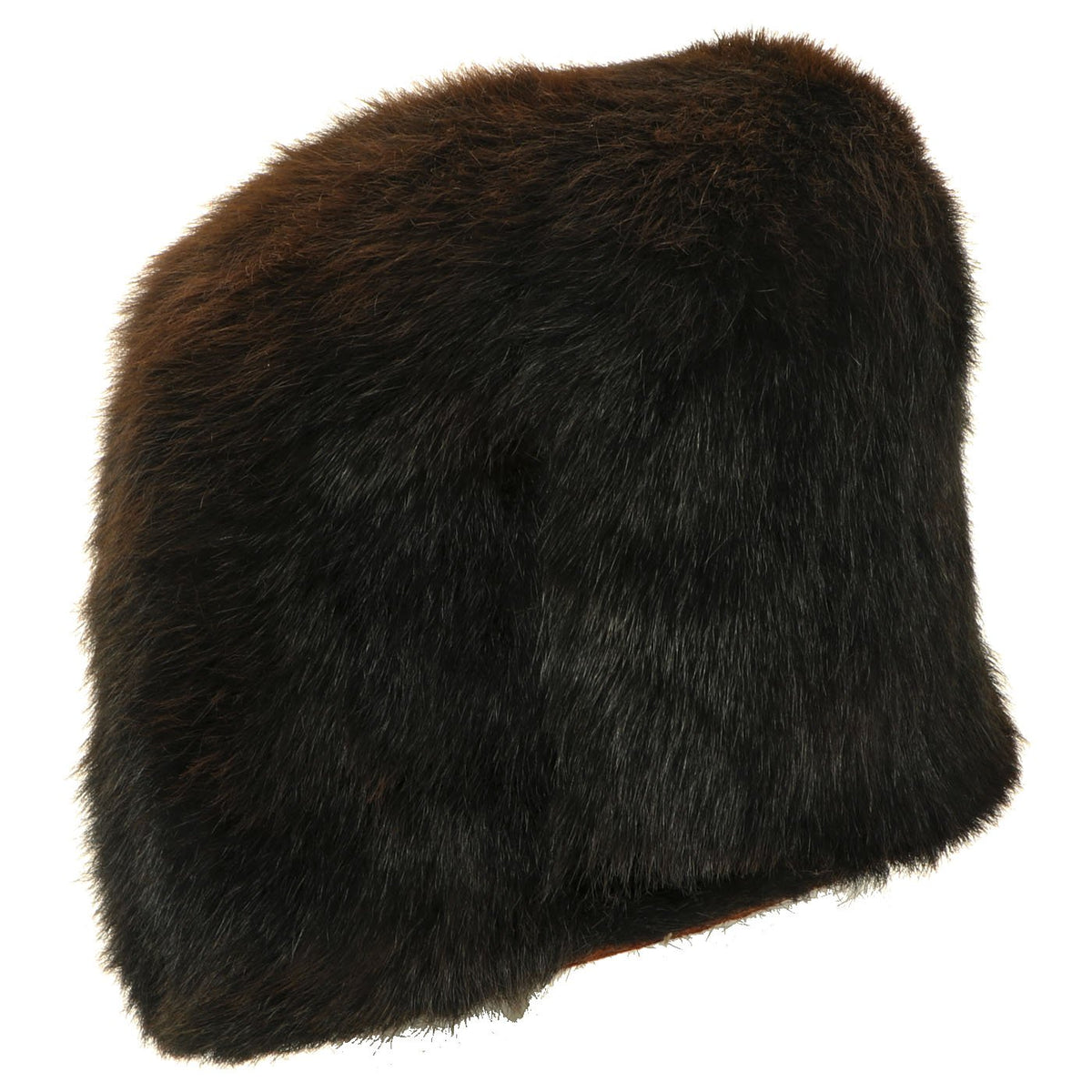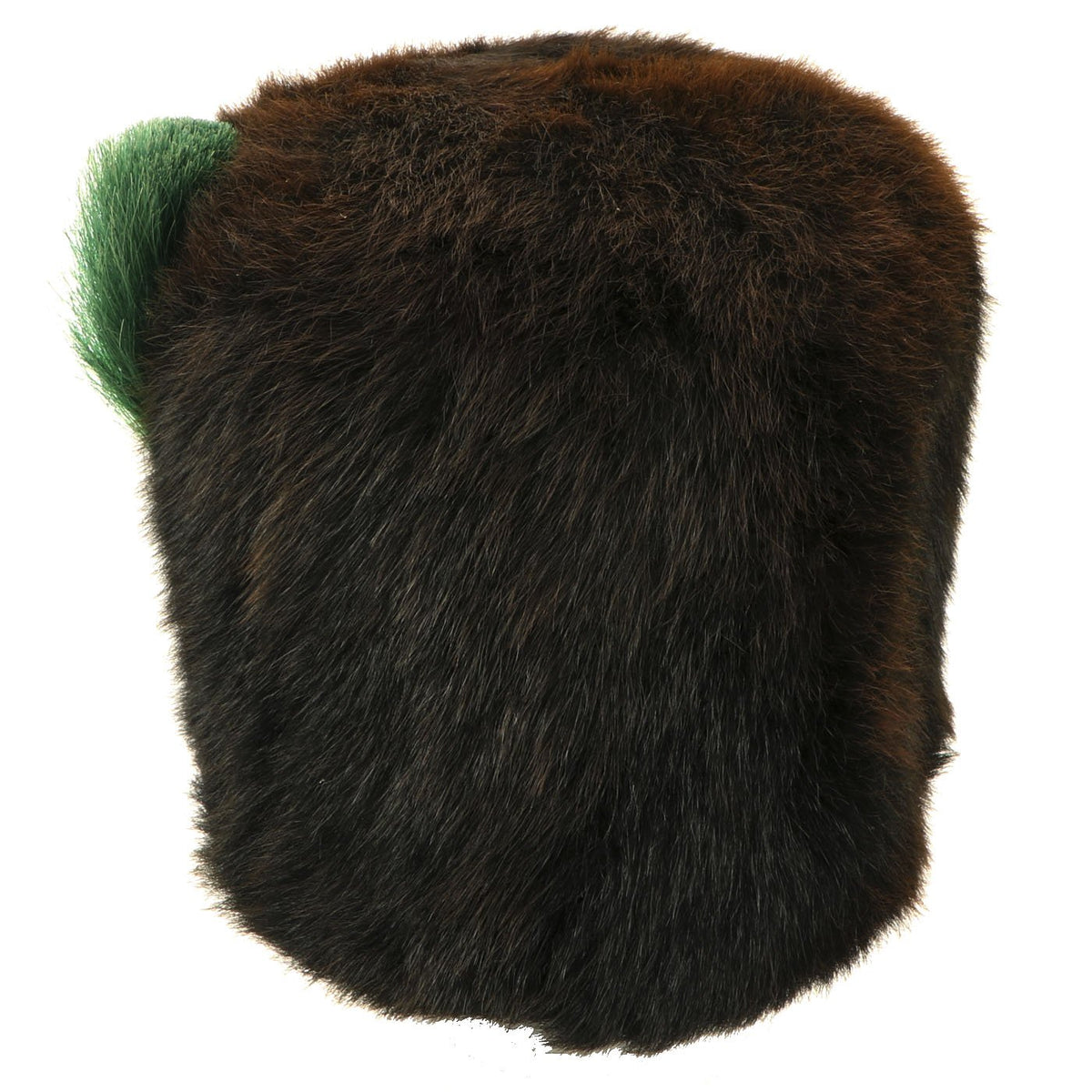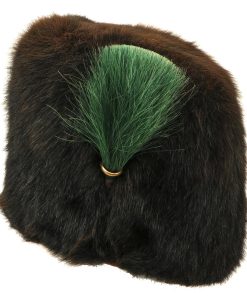Original British WWI Royal Irish Fusiliers Bearskin Busby by Hobson & Sons in size 7 3/8 – dated 1914 Original Items
$ 495,00 $ 148,50
Original Item: Only One available. First formed as part of the Childer’s Reforms of 1881, the official title of this regiment from that point through WWI was Princess Victoria’s (Royal Irish Fusiliers) Regiment. It was formed by the amalgamation of the 87th (Prince of Wales’s Irish) Regiment of Foot and the 89th (The Princess Victoria’s) Regiment of Foot.[1] The regiment got its nickname, the Faughs, from its Irish war cry “Faugh A Ballagh” (Fág a’ Bealach, meaning Clear the Way) from the Napoleonic Wars.
During WWI, the 1st Battalion landed at Boulogne-sur-Mer as part of the 10th Brigade in the 4th Division in August 1914 for service on the Western Front and suffered heavy losses at the Battle of Le Cateau in August 1914. The 2nd Battalion landed at Le Havre as part of the 82nd Brigade in the 27th Division in December 1914 for service on the Western Front, but moved to Salonika in December 1915 for service on the Macedonian front before moving on to Egypt for service in Palestine in September 1917. In response to the outbreak of World War One, the 7th Battalion was raised, for the first time, and subsequently commanded, by Colonel Richard S. H. Moody.
The 3rd (reserve) Battalion fought in operations to end the Easter Rising in Dublin in 1916. Two of the Royal Irish Fusiliers were killed and six more wounded.
When more battalions were raised as part of the “New Armies”, the 5th (Service) Battalion and 6th (Service) Battalion landed at Suvla Bay in Gallipoli as part of the 31st Brigade in the 10th (Irish) Division in August 1915 but moved to Salonika in October 1915 for service on the Macedonian Front. The 7th (Service) Battalion, commanded by Lieutenant-Colonel Frederic Thornton Trevor Moore, and 8th (Service) Battalion, commanded by Colonel John Southwell Brown, landed in France as part of the 49th Brigade in the 16th (Irish) Division in February 1916 for service on the Western Front. The 9th (Service) Battalion (County Armagh) landed at Boulogne-sur-Mer as part of the 108th Brigade in the 36th (Ulster) Division in October 1915 for service on the Western Front.
We offer here a splendid condition Regimental Bearskin Busby Helmet, dated 1914, complete with a green horse hair hackle to the right side, for the Royal Irish Fusiliers Regiment. The helmet has a simple leather chin strap, broken off at one side, so it was most likely for an enlisted man. It unfortunately does not have the regimental cap badge on the front of the busby, though there is a hole for it, so it was removed at some point.
The inside still bears the original pink rectangular manufacturers label:
HOBSON & SONS.
LONDON.
7 3/8
1914
Below this is the official War Department (W “Broad Arrow” D) marking, over another 1914 date. Definitely a well marked helmet.
The condition of the bearskin is quite nice, and the interior of the shell is very good as well. The leather liner is however somewhat worn, with much of the black finish having flaked off. However the leather is still intact, and has the correct top tie.
A very nice WWI Issue Royal Irish Fusiliers busby, ready to display!
Fast Shipping with Professional Packaging
Thanks to our longstanding association with UPS FedEx DHL, and other major international carriers, we are able to provide a range of shipping options. Our warehouse staff is expertly trained and will wrap your products according to our exact and precise specifications. Prior to shipping, your goods will be thoroughly examined and securely secured. We ship to thousands clients each day across multiple countries. This shows how we're dedicated to be the largest retailer on the internet. Warehouses and distribution centres can be located throughout Europe as well as the USA.
Note: Orders with more than one item will be assigned a processing date depending on the item.
Before shipping before shipping, we'll conduct a thorough inspection of the items you have ordered. Today, the majority of orders will be delivered within 48 hours. The delivery time will be between 3-7 days.
Returns
The stock is dynamic and we cannot completely manage it because multiple stakeholders are involved, including our factory and warehouse. So the actual stock may alter at any time. It's possible that you may not receive your order once the order has been made.
Our policy is valid for a period of 30 days. If you don't receive the product within 30 days, we are not able to issue a refund or an exchange.
You can only return an item if it is unused and in the same state as the day you received it. You must have the item in its original packaging.
Related products
Uncategorized
Angolan Rebel 1970s era 60mm Inert Display Mortar from Angolan Civil War Original Items
Uncategorized
Uncategorized
Uncategorized
Band of Brothers ORIGINAL GERMAN WWII Le. F.H. 18 10.5cm ARTILLERY PIECE Original Items
Uncategorized
Uncategorized
Armored Burgonet Helmet & Polearm from Scottish Castle Leith Hall Circa 1700 Original Items
Uncategorized
Uncategorized
Uncategorized
Uncategorized
Uncategorized
Uncategorized
Uncategorized
Uncategorized
Uncategorized
Uncategorized
Uncategorized
Armoured Fighting Vehicles of the World: AFVs of World War One (Hardcover Book) New Made Items
Uncategorized


